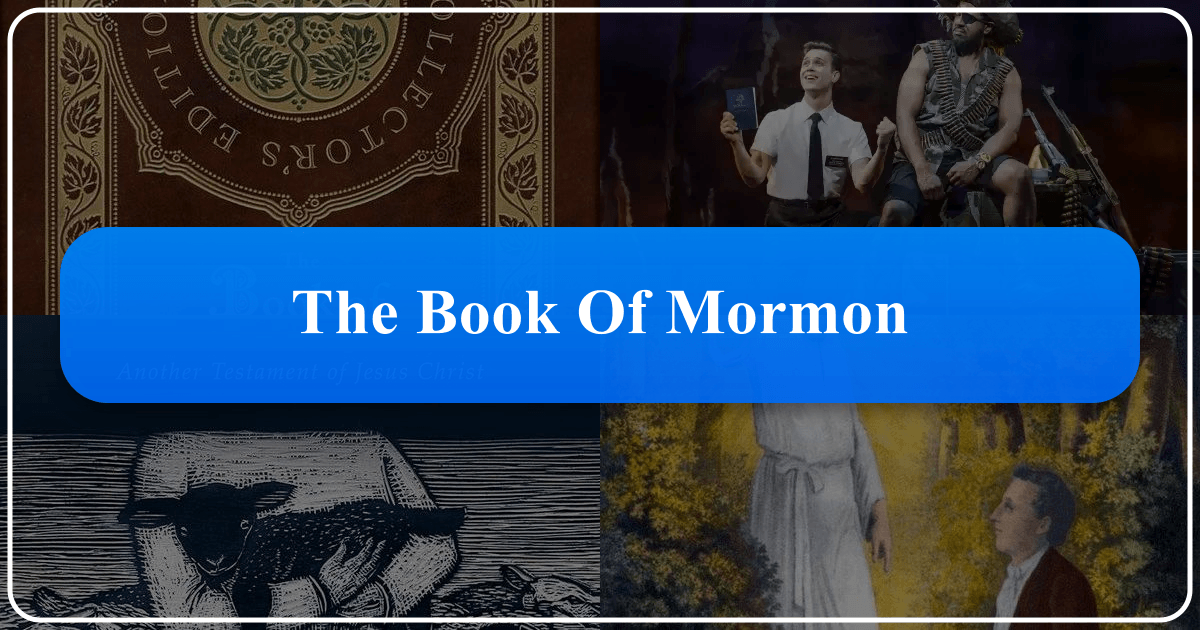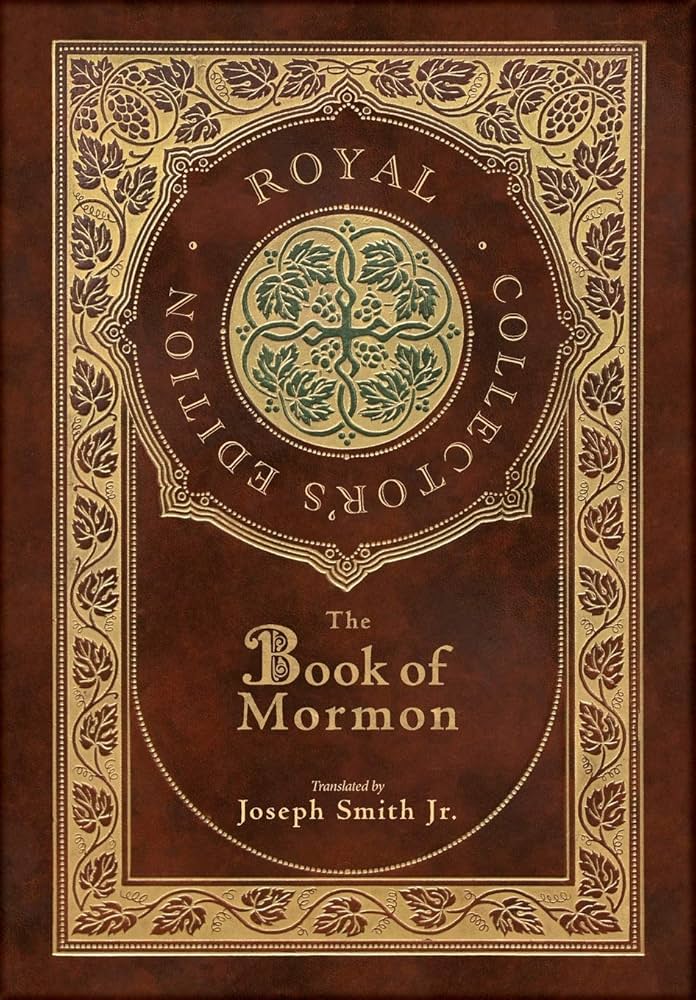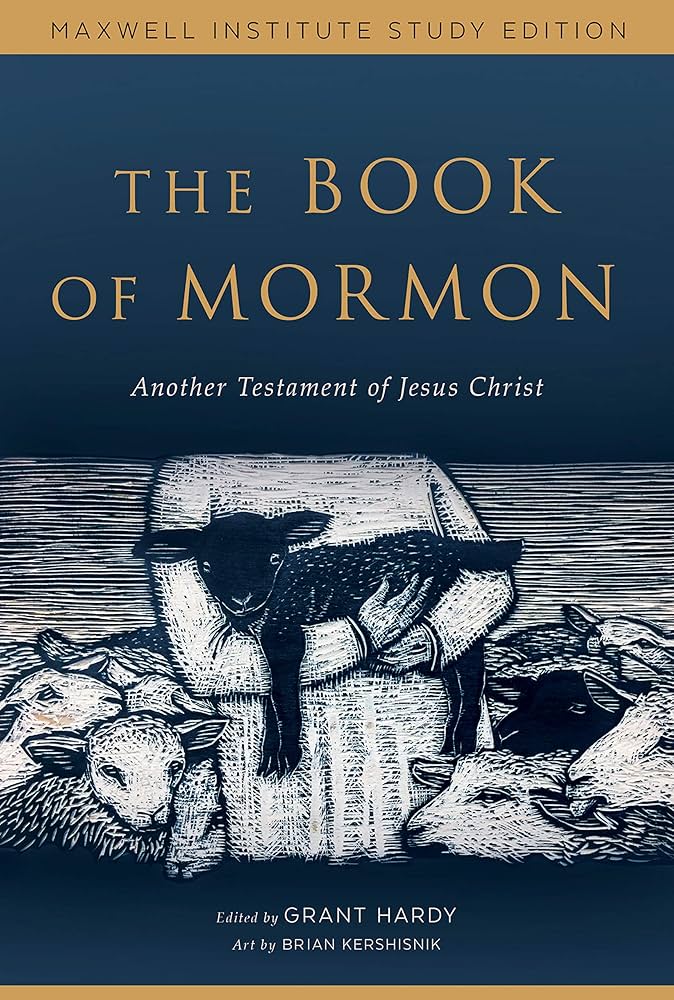The Book of Mormon: A Deep Dive into Text, Music, and Cultural Impact

The Book of Mormon, a central text of The Church of Jesus Christ of Latter-day Saints, has transcended its religious origins to garner significant attention across various fields. Its unique narrative, theological implications, and subsequent adaptations, particularly the award-winning Broadway musical, have cemented its place in popular culture and spurred considerable academic and public interest. This article explores the Book of Mormon through multiple lenses, examining its literary merit, historical context, musical adaptation, and enduring cultural impact.
The Book of Mormon: A Literary and Theological Examination
The Book of Mormon, presented as a record of ancient inhabitants of the Americas, is categorized within the genres of religious text, historical narrative, and prophetic writing. Unlike typical historical accounts, it incorporates elements of divine intervention, miraculous events, and spiritual guidance, making it a complex text demanding careful interpretation. The book’s structure consists of several interconnected narratives, chronicling the journeys, struggles, and triumphs of various groups—primarily the Nephites and Lamanites—who are presented as descendants of ancient Israelites who migrated to the Americas.

The overarching narrative centers around the theme of God’s covenant with His people and the repeated cycles of apostasy, repentance, and redemption. The text showcases significant moral and spiritual lessons, emphasizing themes of faith, repentance, the importance of following Christ, and the consequences of disobedience. The inclusion of Jesus Christ’s visit to the Americas after His resurrection is a key theological assertion unique to the Book of Mormon, providing a supplementary “testament” to the accounts found in the Bible. This visit and its subsequent impact significantly influence the book’s narrative arc and the spiritual development of the characters.
The Book of Mormon’s literary style reflects its ancient setting and the diverse voices of its purported authors. The language, often described as archaic and sometimes difficult for modern readers, contributes to the sense of antiquity and authenticity some ascribe to the text. Furthermore, the narrative’s structure features repetitive cycles of righteousness and wickedness, highlighting the consequences of choices and the enduring power of faith. The book has a substantial length, totaling several hundred pages, indicating the scope of the historical record and the abundance of material contained within. The complexity of the narrative, with its interconnected stories, makes it a challenging yet potentially rewarding read for anyone seeking profound insights into religious themes and the human condition.

Books: Genres and Literary Styles
The Book of Mormon can be approached from several literary perspectives. Its genre is complex, blending elements of historical fiction, religious scripture, and prophetic literature. The book’s narrative is characterized by recurring motifs of chosen people, prophecies, and divine interventions. The distinct writing styles of the various purported authors—each contributing their own accounts and perspectives—impart a multifaceted and dynamic narrative experience. The repeated cycles of prosperity and decline, obedience and rebellion, contribute to the book’s rich tapestry of human experience.

Authors: Prophecies and Divine Revelation
The Book of Mormon credits its authorship to various ancient prophets and writers, each contributing their own accounts and perspectives to the overall narrative. The most prominent among these is Mormon, who abridges and compiles the earlier accounts onto gold plates. The final scribe and compiler, Moroni, is often seen as the most significant author, having hidden the plates and later appearing to Joseph Smith to direct their discovery and translation. These prophets, according to the text’s internal assertions, acted under divine inspiration, receiving prophecies and direct revelations from God. Their experiences and messages shape the narrative’s moral and spiritual dimensions. The book’s claim to divine inspiration and the specific narrative details of the authors’ lives and religious experiences are central to the theological and historical significance some ascribe to the text.
Reading and Learning: Spiritual Growth and Personal Reflection
The Book of Mormon is meant for spiritual study and personal reflection. Readers are encouraged to engage with the text prayerfully, seeking guidance and seeking insights into spiritual truths. Summaries and study guides are widely available to aid in understanding the book’s complex narrative and themes. Educational value stems from the detailed accounts of ancient civilizations and the exploration of core religious principles. Many find life lessons within the accounts of the characters’ trials, triumphs, and spiritual journeys. Reading habits surrounding the Book of Mormon often include daily study, group discussions, and individual meditation. The emphasis on personal revelation and the application of its teachings to daily life makes the Book of Mormon a continuous source of personal growth and spiritual enrichment.
The Book of Mormon Musical: A Cultural Phenomenon
Trey Parker, Matt Stone, and Robert Lopez’s Broadway musical adaptation of The Book of Mormon took the world by storm. It’s a remarkably successful example of satire, simultaneously irreverent and surprisingly heartfelt. The musical retains the core narrative of two young Mormon missionaries sent to Uganda but infuses it with raunchy humor, profanity, and social commentary. While lampooning aspects of organized religion, particularly the Mormon faith, and cultural stereotypes, the musical retains a certain empathy for its characters and their experiences.
The success of the musical can be attributed to several factors, including its catchy songs, witty dialogue, and skilled performances. The show has received numerous awards and critical acclaim, including nine Tony Awards, including Best Musical, and a Grammy Award for Best Musical Theater Album, a testament to its creative achievement and cultural resonance. Its financial success, grossing hundreds of millions of dollars, reflects the significant audience the musical has drawn and the appeal it holds. The longevity of the Broadway production and the many international stagings worldwide further highlight its sustained popularity and enduring cultural impact.
Authors: A Unique Collaboration
The collaboration between Trey Parker and Matt Stone, creators of the animated series South Park, and Robert Lopez, co-creator of Avenue Q, represents a unique blend of comedic and musical talent. Parker and Stone’s expertise in provocative and darkly humorous satire, coupled with Lopez’s proficiency in creating memorable and catchy musical numbers, contributed to the musical’s distinct tone and style. Their combined creative vision shaped the musical’s success, producing a production that simultaneously pokes fun at religious beliefs and human fallibility while still exploring meaningful themes of faith and human connection. This unexpected collaboration contributed significantly to the musical’s originality and surprising depth.
Cultural Impact: Awards, Adaptations, and Communities
The Book of Mormon musical has significantly impacted popular culture. Its numerous awards underscore its artistic merit, while the many international productions and subsequent touring companies demonstrate its global appeal. Adaptations, though limited to the stage for now, highlight its narrative potential. Communities have formed around the musical, fostering discussions and shared experiences among fans from diverse backgrounds. The musical’s ability to generate both laughter and meaningful conversations on topics of religion, faith, and culture has resonated widely, establishing its lasting impact on contemporary entertainment.
Libraries and Archives: Accessibility and Preservation
The Book of Mormon, in its various formats, is accessible in numerous libraries and archives worldwide. Physical copies are present in countless public and academic libraries, alongside digital versions available online, enabling widespread access to the text. Rare collections and archives may hold first-edition printings or manuscripts, serving as historical artefacts of the book’s publication and circulation. The accessibility of the Book of Mormon through diverse avenues underscores its continuing relevance and ensures its preservation for future generations.
Conclusion
The Book of Mormon, both as a religious text and a successful musical, presents a multifaceted subject for study. Its literary and theological significance, combined with the cultural phenomenon it has become through stage and screen, ensures its continued relevance in our multifaceted modern world. By exploring the Book of Mormon through these various lenses, we can gain a deeper appreciation for its complexity, its impact, and its enduring power to provoke thought and inspire conversation. Further research into its historical context and ongoing interpretations will continue to broaden our understanding of its cultural, religious, and literary significance.